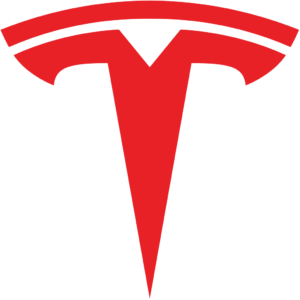How Desperation Stimulates Short-term Rational Thinking…. and Long-term Demise
NOTE: This blog was written in the first two weeks of April, 2020. As such, it cannot and does not anticipate the full effect of the COVID-19 pandemic on the US and global auto industry. Stay tuned…..
In this series of eleven blogs, we will discuss the current situation in Detroit with the traditional “Big 3” – Ford, GM, and Fiat Chrysler (FCAU) – and their upstart rival Tesla. The series will end with specific recommendations as to what the Big 3 must do to survive against Tesla and other electric vehicle manufacturers. The eleven blogs in this series are:
- The Detroit Big 3’s current woes, Part 1
- The Detroit Big 3’s current woes, Part 2
- A brief history of the Big 3’s electric vehicle attempts, Part 1, GM
- A brief history of the Big 3’s electric vehicle attempts, Part 2, Ford
- A brief history of the Big 3’s electric vehicle attempts, Part 3, FCAU and General Big 3 Summary
- What’s so special about Tesla — Part 1, financials and battery performance
- What’s so special about Tesla – Part 2, manufacturing, and cost/time reduction
- What’s so special about Tesla – Part 3, coming Tesla models, etc.
- What’s so special about Tesla – Part 4, Tesla versus emerging competitors
- Why Tesla so successful……..the Company; the Cars
- What’s a poor Big 3 auto company to do now?
What’s a poor Big 3 auto company to do now?
Clearly Detroit’s Big 3 are feeling the heat – – from environmentalists, from Tesla’s continuing model proliferation and growth, from investors, and, if those factors aren’t enough, especially from the COVID-19 virus sweeping the US and the rest of our planet. Rather than dying a death of a thousand cuts, what can the Big 3 possibly do to survive, grow, and prosper?
Some suggestions:
- Absorb Tony Seba’s teachings and spread his gospel throughout each organization.
- Accelerate the development and production of all battery-powered electric vehicles. Instead of building a compliance vehicle to offset the guzzlers at the top, eliminate a high-end guzzler. For instance, GM builds three models of long SUVs – an Escalade, and GMC and Chevrolet Suburbans. Eliminate two as ICE vehicles. Drop the Chevrolet brand for GMC. Bring out one electric version to replace the two ICE-powered SUVs lost. Announce that beginning in 2025 GM will no longer produce any more ICE-powered vehicles. Ford and FCAU can proceed similarly.
- Go faster, much faster. Eliminate all impediments to urgent action. Eliminate all unnecessary activities. Kill unprofitable vehicle models, eliminate parts counts and long vehicle options lists, reduce available paint colors and interior options. Get the accountants out of the way. Focus on producing a few “killer” vehicles.
- Stop wasting engineering and financial resources on producing hybrids or plug-in hybrids. They cannot be cost-competitive. They show that you do not understand the economics of electric vehicles. You are not fooling the buying public by offering them – they remain primarily ICE-powered vehicles. As long as you produce them you will be unable to compete effectively in the electric vehicle marketplace. The idea is to take advantage of battery-powered electrics to simplify and produce a non-polluting less costly better performing vehicle so that you can either increase your margins, or can lower a vehicle’s price to consumers, or both – a win-win for everyone. Producing a hybrid only adds complexity and cost, while producing little tangible gain in vehicle performance. Hybrids are electric vehicles on training wheels. Ditch the wheels and go all-in on electric.
- Come up with a strategy to initiate direct over-the-Internet vehicle ordering. Make the customer buying experience painless. Start buying up and closing multiple dealerships in urban areas. Do away with sales incentives – – to the dealers, and by the dealers. Lower MSRPs to the current average sale price. Make the new MSRP selling prices non-negotiable. Do away with dealer inventories, their costly financing, and the huge amount of land a dealer has to own. Allow each dealer no more than two (not-for-sale) demo vehicles per car or truck model
- Remove historical and cultural impediments to knowing real customer demand, not today’s artificial demand “filtered” by “turn and earn”, dealer managers who “know their customers”, or OEM dealer reps intent on pushing certain models and options. Kill “turn and earn”. Allow open Internet-based customer or dealer orders. If orders for a model or option are low, find out why and either fix it now – not at the model year end or at the model’s refresh time, OR eliminate the vehicle/option. Open websites available to the public where owners can enter complaints and suggestions for each model vehicle. Act on complaints immediately (as Tesla did with the Model Y’s heat pump noise and lack of a trailer hitch) with running production changes that eliminate the problem.
Currently, OEMs practice “social distancing” from their customers with masks called dealers in the middle. Get dealers out of the customer feedback loop. Instead, OEMs should report to their dealers the customer complaints they have received and what they are doing about them. Listen, learn, and respond to customers – they are a great source of ideas. Make sure OEM CEOs get this unfiltered customer information. Get closer to your customers and they will get closer to your brand.
- Move your electric vehicle engineers, staff, and plants out of Detroit, to a place where annual foul weather cannot impede or interrupt operations. Places like Reno, NV or the Phoenix/Scottsdale, AZ areas come to mind – locales where people will want to live and be able to live less expensively; closer to the warm South, and closer to West Coast hubs of innovation and software/semiconductor expertise. Give these organizations independent Boards and fill them with some industry outsiders from the worlds of high tech, solar power, semiconductor, and software companies.
- Musk has shown that the easiest way to hire topflight software (or manufacturing engineering) professionals is to simply buy a company that already has them. Then all you have to do is challenge them with creative and ground-breaking work, and, of course, pay them well.
That seems to be enough ideas for the Big 3 to start on at this point.
I don’t believe a second US Federal (corona virus-inspired) bailout of the US auto industry will ensure lasting success for the Big 3. These companies need more and more drastic “5-alarm fire” change. A bailout cannot possibly make up for incompetent management who haven’t seen the writing on the wall and acted quickly enough during the past decade and especially at this hour!
In the meantime, Tesla marches on. In the first quarter of 2020, while the Dow Jones Industrial Average fell 23%, the S&P 500 index fell 20%, and the Nasdaq composite fell 14.2%, Tesla’s stock price rose 25.3%. Tesla handily beat analysts’ forecasts for their Q1, 2020, sales and production numbers (in spite of the Coronavirus shutdowns in its China and California plants!) – the best first quarter Tesla has ever had. Their Q1 2019 to Q1 2020 sales rose 40%. Excelsior!
Updates to be continued – watch this site………………………
This concludes this series of 11 blogs regarding the current Detroit Big 3/Tesla scenario.
Your feedback in the form of comments or suggestions are welcome in the comment window. Thank you for following my blogs and for participating in my blogging community.




